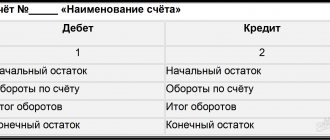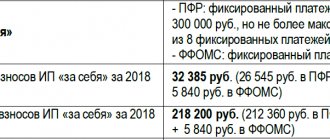basic information
Let's name the main payments that are paid upon joining an SRO:
- Introductory fees (paid once).
- Membership (paid quarterly).
- To the compensation fund.
- Insurance payments.
The amount of most of these contributions is set by the SRO itself. There are no clear rules regarding the accounting of contributions. Accounting procedures should be based on basic principles. It makes sense to recognize contributions as other expenses within the framework of tax accounting. They are recognized evenly throughout the tax period, which will avoid questions from the tax authorities. The accounting periods are determined by the SRO independently.
IMPORTANT! Membership payments payable quarterly are recognized as other expenses at a time. They are taken into account by the date of payment.
Membership fees are posted in accounting
There are organizations that unite many other people or companies with goals other than making a profit. As a rule, individuals in such organizations are bound by common interests. But for successful work you need money.
Who needs membership fees In order for the organization to function and fulfill its tasks, its members pay membership, entrance or compensation fees depending on the type of association. These are non-profit communities:
- political parties;
- homeowners associations (HOAs);
- self-regulatory organizations (SRO);
- gardening non-profit partnerships (SNT);
- other associations.
Note from the author! All of them gather in their ranks participants bound by one goal.
Membership fees in SRO: accounting entries Why do members of such funds need to pay membership fees?
Without them they cannot exist.
Tax accounting of contributions to SRO
Paragraph 1 of Article 264 of the Tax Code of the Russian Federation states that fees and deposits are considered other expenses. For this accounting procedure, two conditions must be met:
- Payments are required.
- Contributions are a condition for the operation of the company.
Payments to SRO meet all these requirements, so they can be recognized in the structure of other expenses. That is, they are subject to income tax calculation. The corresponding instructions are in letters from the Ministry of Finance. When doing tax accounting, you must adhere to the rules specified in paragraph 1 of Article 272 of the Tax Code of the Russian Federation. They apply to one-time and annual payments. The Tax Code of the Russian Federation states that expenses can be recognized step by step only in the reporting period to which they belong. This does not mean when the payments were actually made.
It is necessary to take into account the explanations of the Ministry of Finance. According to them, the provisions of Article 272 of the Tax Code of the Russian Federation are relevant only in relation to expenses that arose on the basis of civil law agreements. If expenses were incurred for other reasons (for example, a fee for issuing a license), Article 272 of the Tax Code of the Russian Federation is not used. There is also a letter from the Ministry of Finance dated May 31, 2007, which states the possibility of one-time recognition of expenses. What should you be guided by? The company can decide for itself. There is no practice of judicial institutions on this issue.
The safest option is an even distribution of contributions in the structure of other expenses on the basis of paragraph 1 of Article 272 of the Tax Code of the Russian Federation.
However, in this case you need to keep in mind some nuances. The membership payment establishes the firm's right to participate in the SRO during the quarter. That is, the corresponding expenses are taken into account in the quarter to which they belong. The entrance fee is paid once. On its basis, a certificate is issued. Based on Part 9 of Article 55 of the Civil Code of the Russian Federation, it is unlimited. The company has the right to formulate a procedure for accounting for expenses for the payment of the entrance fee and payment to the fund. These expenses can also be distributed evenly throughout the reporting period. This period is set by the company independently, but, according to the letter of the Ministry of Finance dated October 15, 2008, it must be reasonable. Periods for writing off expenses must comply with accounting policies.
Accounting
Contributions made by participants are related to the work of the company. For this reason, they are recognized as expenses in ordinary areas of activity on the basis of paragraph 5 of PBU 10/99. The expenses in question are included in the cost of work based on clause 9 of PBU 10/99. When recognizing expenses, the relationship between actual expenses and revenues is taken into account.
Membership fees are quarterly, and entrance fees and payments to the fund are one-time, and therefore expenses cannot be immediately recognized as expenses. Quarterly payments are written off as expenses in the period (quarter) in which the money actually arrived at the company.
IMPORTANT! The period for recognizing one-time payments is determined by the SRO independently, since the period of participation in the SRO is unlimited.
Clause 65 of the Accounting Regulations states that expenses incurred in the reporting period, but attributable to subsequent periods, are recorded in the balance sheet as a separate item. They are recognized as expenses of the following periods and written off in the manner approved by the accounting policy. The company itself must establish the procedure for writing off contributions. The following options are possible:
- Evenly over a given period.
- In accordance with the volume of work performed.
Contributions received by the SRO must be recorded on the debit of account 97. The corresponding account is account 76. Then they are classified as expenses for the main forms of activity. The third section of the Accounting Instructions states that data on expenses for the main forms of activity are collected either on accounts 20-29 or on accounts 20-39. The most optimal account for collecting information is account 26. The accounting procedure is determined by the company independently.
How does SRO work?
In turn, the SRO unites entrepreneurs according to the same specifics of licensed activities, for example, construction organizations or designers.
Note from the author! This is due to the fact that the state licensing system for professional activities ceased to exist in 2010.
But their activities require mandatory clearance, for which there are special committees that have taken on control and supervisory functions. Therefore, participants regulate themselves by uniting in non-profit partnerships.
When an organization becomes a member of an SRO, it assumes responsibilities for supporting the activities of the association, that is, financial costs. The procedure is established by Federal Law No. 315-FZ “On Self-Regulatory Organizations”.
The amounts of contributions are adopted by the general meeting of participants and must be the same for everyone. Membership fees are ongoing, regular payments. They must be paid:
- monthly;
- quarterly;
- semiannually;
- annually.
Wiring used
When debiting payments monthly, these entries are used:
- DT76 KT51. Receipt of payment to SRO.
- DT97 KT76. Attribution of contributions to expenses of the following periods.
- DT20 KT97. Systematic write-off of contributions.
When writing off contributions at a time, these transactions are relevant:
- DT76 KT51. Payment of contributions.
- DT20 KT76. Write-off of payments.
Be sure to take into account that transactions will vary depending on the type of payment.
Example
In February 2021, the company joined the SRO and transferred an entrance payment of 90,000 rubles. The payment to the compensation fund amounted to 350,000 rubles.
The head of the company issued an order according to which payments would be written off evenly over 36 months. Certificate of entry received in February 2021. From this month, the company will make monthly payments in the amount of 6,000 rubles every month. In January, these postings must be made:
- DT76 KT51. Receipt of funds in the amount of 440,000 rubles (350,000 + 90,000).
- DT97 KT76. Recognition of two contributions as expenses of subsequent periods.
- DT68 KT77. Deferred tax liability (440 thousand * 20%).
Every month (from February to December 2021), the accountant makes these entries:
- DT76 KT51. Transfer of a monthly payment in the amount of 6,000 rubles.
- DT26 KT76. Write-off of the received contribution for current expenses.
- DT26 KT97. Expenses of the following periods are written off (in parts) for current expenses (440,000/36 months).
- DT77 KT68. Decrease in deferred liability.
Monthly postings are reflected throughout the year.
Typical postings for a non-profit organization
Accounting for target financing
Accounting for expenses through targeted financing
Accounting for fixed assets: acquisition, depreciation, write-off, sale
Accounting for cash transactions
Accounting for income from business activities
Accounting for exchange rate differences
| Operation | Debit | Credit |
| Accounting for target financing | ||
| Option 1: Income is pre-accrued | ||
| The target income under the donation agreement has been accrued | 76 | 86 |
| Membership fees accrued by decision of the general meeting | 76 | 86 |
| Targeted funding has been received to the current account (cash office) | 51 (50) | 76 |
| Option 2: Income is not pre-accrued | ||
| Targeted funding has been received to the current account (cash office) | 51 (50) | 86 |
| Accounting for expenses through targeted financing | ||
| Option 1: Using accounts 20 and 26 | ||
| Salary accrued | 20-2 | 70 |
| Compulsory insurance premiums charged | 20-2 | 69 |
| Accountable amounts included in expenses | 20-2 | 71 |
| Materials that were used in statutory activities were written off | 20-2 | 10 |
| Taxes accrued (statutory activity): land, transport, property tax, state duty | 20-2 | 68 |
| Used target funding written off | 86 | 20-2 |
| Option 2: Using account 86 directly | ||
| Salary accrued | 86 | 70 |
| Compulsory insurance premiums charged | 86 | 69 |
| Accountable amounts included in expenses | 86 | 71 |
| Materials that were used in statutory activities were written off | 86 | 10 |
| Taxes accrued (statutory activity): land, transport, property tax, state duty | 86 | 68 |
| Fixed Asset Accounting | ||
| Acquisition of fixed assets | ||
| Fixed assets (hereinafter referred to as Fixed Assets) are purchased for business activities | ||
| Transferred to the supplier for the OS | 60-2 | 51 |
| Supplier's invoice accepted | 08 | 60-1 |
| VAT on purchased OS | 19 | 60-1 |
| Input VAT is accepted for deduction if the activity for which the object was purchased is subject to VAT | 68 | 19 |
| VAT is included in the cost of fixed assets if the activity is not subject to VAT | 08 | 19 |
| Accepted for OS accounting | 01 | 08 |
| Advance issued is credited | 60-1 | 60-2 |
| The fixed assets were acquired using targeted proceeds for statutory activities | ||
| Transferred to the supplier for the OS | 60-2 | 51 |
| Supplier's invoice accepted | 08 | 60-1 |
| VAT on the purchased item | 19 | 60-1 |
| VAT is included in the cost of the object | 08 | 19 |
| Accepted for OS accounting | 01 | 08 |
| Advance issued is credited | 60-1 | 60-2 |
| Source of funding reflected: | ||
| - option 1 | 20-2 (86) | 83-4 |
| – option 2 | 86 | 86-9 |
| Depreciation of fixed assets | ||
| Accrued OS wear and tear | 010 | |
| Write-off of fixed assets | ||
| Option 1: OS was acquired using income from business activities and used in such activities | ||
| The original (replacement) cost of the asset has been written off | 01-B | 01 |
| Accrued depreciation written off | 02 | 01-B |
| The residual value of the fixed assets has been written off | 91-2 | 01-B |
| Parts that remain from dismantling | 10 | 91-1 |
| Result of disposal | 99 | 91-9 |
| Option 2: fixed assets were acquired using targeted proceeds after 01/01/2000 and used in statutory activities | ||
| The original (replacement) cost of the asset has been written off | 83 | 01 |
| Parts that remain from dismantling | 10 | 91-1 |
| Accrued depreciation written off | 010 | |
| Option 3: fixed assets were purchased using targeted proceeds before 01/01/2000 and depreciation was calculated on them | ||
| The original (replacement) cost of the asset has been written off | 01-B | 01 |
| Accrued depreciation written off | 02 | 01-B |
| The residual value of the fixed assets has been written off | 86 | 01-B |
| Parts that remain from dismantling | 10 | 91-1 |
| Sale of fixed assets | ||
| Option 1: OS was acquired from business income and used in such activities | ||
| Buyer's debt accrued | 76 | 91-1 |
| VAT charged | 91-3 | 68-3 |
| The original (replacement) cost of the asset has been written off | 01-v | 01 |
| Accrued depreciation written off | 02 | 01-v |
| The residual value of the fixed assets has been written off | 91-2 | 01-v |
| Parts that remain from dismantling | 10 | 91-1 |
| Result of disposal | 99 | 91-9 |
| Option 2: fixed assets were acquired using targeted proceeds after 01/01/2000 and used in statutory activities | ||
| Buyer's debt accrued | 76 | 91-1 |
| VAT charged | 91-3 | 68-3 |
| The original cost of the OS has been written off | 83 | 01 |
| Parts that remain from dismantling | 10 | 91-1 |
| Result of disposal | 91-9 | 99 |
| Accrued depreciation written off | 010 | |
| Accounting for cash transactions | ||
| Receiving cash from the bank | 50 | 51 |
| Delivered cash to the bank | 51 | 50 |
| Salary issued from the cash register | 70 | 50 |
| Financial assistance provided | 76 | 50 |
| Issued on account (overexpenditure was reimbursed according to the approved advance report) | 71 | 50 |
| The balance of accountable amounts was returned to the cashier | 50 | 71 |
| Accounting for income from business activities | ||
| Reflected sales revenue | 62 | 90-1 |
| VAT charged | 90-3 | 68-3 |
| Costs written off | 90-2 | 20 |
| The result of the implementation is reflected | 90-9 | 99 |
| Contingent income tax expense accrued | 99 | 68-2 |
| Balance Reformation: | ||
| - profit | 99 | 84 |
| – loss | 84 | 99 |
| Profit is added to target revenues | 84 | 86 |
| The loss is written off against target revenues (if income from business activities is insufficient or non-existent) | 86 | 84 |
| Accounting for exchange rate differences. Receipt and sale of target funds in foreign currency | ||
| A donation has been received to a transit currency account | 52-2 | 76 |
| The donation is included in the target revenues | 76 | 86-2 |
| Foreign currency was transferred from a transit currency account to a current currency account | 52-1 | 52-2 |
| The exchange rate difference on the transit currency account is reflected: | ||
| – positive | 52-2 | 91-1 |
| – negative | 91-2 | 52-2 |
| Currency for sale listed | 57 | 52-1 |
| Funds from the sale of foreign currency are credited to the ruble account | 51 | 91-1 |
| The exchange rate difference on foreign currency in transit is reflected | 57 (91-2) | 91-1 (57) |
| The cost of sold foreign currency has been written off | 91-2 | 57 |
| Bank commission written off: | ||
| – from a current account | 91-2 | 51 |
| – from a current foreign currency account | 91-2 | 52-2 |
| – withheld by the bank from funds due to the organization | 91-2 | 76 |
| 76-5 | 91-2 | |
| Result from selling currency: | ||
| - profit | 91-9 | 99 |
| – loss | 99 | 91-9 |
Accounting for insurance expenses
Paragraph 6 of Article 270 of the Tax Code of the Russian Federation states that when establishing the tax base, expenses for optional insurance will not be taken into account. The exception is the contributions specified in Articles 255, 263, 291 of the Tax Code of the Russian Federation. Article 263 of the Tax Code of the Russian Federation states that mandatory payments are included in expenses for insurance. These expenses can be taken into account as part of income taxation. They are included in other expenses. Accounting is carried out based on the actual amount of expenses. The procedure for recognizing contributions is specified in paragraph 6 of Article 272 of the Tax Code of the Russian Federation.
Inclusion in other expenses is quite justified from a legal point of view. A number of companies are required to join an SRO. For example, this applies to construction companies. To join an SRO you must pay mandatory fees. That is, spending is considered economically justified. For this reason, they can be taken into account when assessing taxes.







